A Detailed Examination of Termidor SC Spray
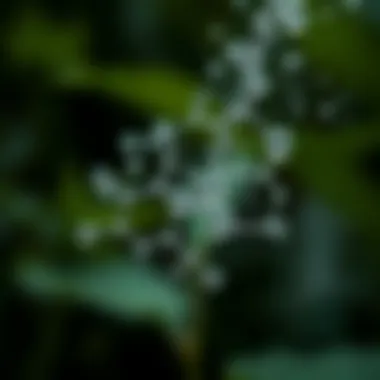

Intro
Maintaining a pest-free environment in your home is not just a luxury, but a necessity. Among the numerous pest threats, termites often lurk in the shadows, silently causing extensive damage before their presence is even discovered. This article takes a closer look at one of the most effective solutions available — Termidor SC Spray. By unraveling the ins and outs of this termiticide, we aim to equip homeowners and pest control professionals with the knowledge they need to effectively manage and prevent termite infestations.
In our structured approach, we’ll explore critical aspects, from identifying the pests themselves to understanding prevention strategies, treatment options, and the unique features of Termidor SC Spray. By the end, you will not only be informed but also empowered to make knowledgeable decisions for protecting your home.
Pest Identification
Detailed descriptions of common pests
Termites are often known as the "silent destroyers". These small, social insects thrive in wood and soil, making many homes susceptible to their voracious appetite. Particularly, the Eastern Subterranean Termite and the Formosan Termite are two notorious species you should watch out for. The Eastern variety, especially prevalent in the U.S., is recognizable by its creamy white body and dark brown head, whereas the Formosan variety tends to be a bit larger and sometimes carries a more aggressive behavior.
There are also drywood termites which do not require contact with soil and can invade wood furniture, beams, and structures. Understanding these various species will help you recognize potential threats and enable timely interventions.
Signs and symptoms of infestations
The signs of termite infestation can be subtle, easily overlooked until significant damage has occurred. Here are key signs to keep an eye on:
- Mud tubes: Often found on basement walls and the exterior of homes, these tubes are made of soil and droppings.
- Wood damage: Look for hollow-sounding wood, as termites consume it from the inside out.
- Frass: This is the fecal matter of termites and appears as small, wood-colored pellets.
- Swarmers: If you see winged insects in springtime, it’s time to take action — they might be reproductive termites leaving the colony to start new ones.
Prevention Strategies
Home maintenance tips for pest prevention
Taking proactive steps can drastically reduce the risk of termite infestations. Here are simple yet effective strategies:
- Regular inspections: Conduct frequent checks around your home to catch signs of termites early.
- Eliminate moisture: Termites are drawn to damp areas. Fix any leaks and ensure proper drainage.
- Seal cracks and gaps: Close off potential entry points by sealing cracks in walls and foundations.
Natural deterrents and barriers
Some homeowners prefer natural methods to keep pests at bay. Consider deploying:
- Boric acid: A natural insecticide that, when used properly, can be an effective termite repellent.
- Nematodes: These tiny worms can help target termites effectively if applied to infested areas.
- Cardboard traps: Set up moisture-laden cardboard traps. Once filled with termites, dispose of them safely.
Treatment Options
Overview of chemical vs. natural treatments
Once an infestation has been detected, treatment methods range from chemical solutions to natural remedies. While chemical treatments like Termidor SC Spray are often deemed more effective for severe infestations, natural solutions work best as preventive measures or for minor issues. Each type has its pros and cons, but understanding them helps tailor solutions to specific needs.
Step-by-step guides for DIY treatments
If you’re inclined to tackle minor infestations yourself, here’s a straightforward guide:
- Identify the problem wood: Look for signs of termite activity and mark affected areas.
- Use a DIY treatment: Apply a boric acid solution or bait traps in the infested area.
- Monitor the situation: Check progress and replace traps as needed.
Remember, severe infestations may need professional intervention, and Termidor SC Spray offers excellent performance when such cases arise.
Remember: It's crucial to apply any treatment in harmony with the surrounding environment, ensuring both effectiveness in pest control and minimal impact on beneficial organisms.
For further understanding and resources, you can visit Wikipedia and CDC.
The journey towards a termite-free home begins with awareness and informed action. With this guide, you can now take steps to protect your sanctuary from the damage termites can cause.
Prolusion to Termidor SC Spray
Termidor SC Spray isn't just another pest control solution; it has become a cornerstone for homeowners aiming to fend off termites. The significance of this topic lies in the comprehensive understanding of how Termidor SC functions, and the advantages it offers. With ever-increasing concerns about home infestations, grasping the details about this product can be the difference between prevention and a costly repair.
Understanding Termidor SC involves more than just knowing that it’s a termiticide. It’s essential to navigate through its chemical composition, application methods, and effectiveness in real-world scenarios. Particularly for housewives and homeowners, demystifying the product’s capabilities can create a sense of agency in combating potential threats to their living spaces.
Why is it Important?
- Protection: Having insight into Termidor SC can empower homeowners to protect their homes proactively.
- Cost-Efficiency: Avoiding unnecessary expenses while dealing with termite issues is crucial. With depth knowledge, one can make informed choices rather than relying on guesswork.
- Safety: It’s vital to understand the safety precautions and environmental considerations that come with any pest control product.
Through this article, we aim to equip you with a deep understanding of Termidor SC Spray. This knowledge will not only lessen your worries about termite infestations but also foster informed decision-making, ensuring your home remains a safe and secure haven.
What is Termidor SC?
Termidor SC is a water-based termiticide, famously effective in managing termite populations. This product is unique because it operates on a dual-action mechanism—acting as both a repellent and a non-repellent, depending on how it interacts with different types of termites. Its distinctive feature is the ability to disrupt the termites’ natural behavior, ultimately leading to their demise. It penetrates through soil, forming a barrier around structures, which is beneficial in preventing infestations from reoccurring.
Termidor SC is often favored due to its efficacy and longevity. Once applied, the solution can provide protection for several years. It's crucial, however, to follow application guidelines closely to maintain its effectiveness.
Historical Context and Development
The historical journey of Termidor SC is quite intriguing. Developed in the late 1990s, it emerged during a time when homeowners faced a rising crisis with termite infestations. Initially, pest control methods relied heavily on harsh chemicals that raised significant environmental and health concerns. However, with the introduction of Termidor SC, the industry pivoted toward safer, yet effective solutions.
Termidor was developed by BASF, a global leader in chemical production, who recognized the need for a safer yet potent alternative. Over time, extensive research has been conducted on its active ingredients and their efficacy, leading to continual innovations in its formulation.
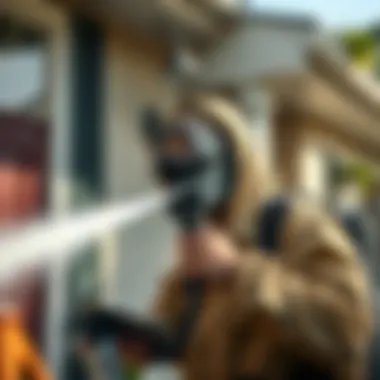

In the years following its release, many field studies demonstrated its effectiveness against various termite species. The data showcased not only its potency but also its safety for use around humans and pets when handled appropriately, which resonated well with green-conscious consumers.
"Termidor SC has transformed the landscape of termite control, blending efficiency with safety in a way few products have achieved."
The commitment to research and development behind Termidor SC sets it apart and guarantees its relevance in modern pest management, while also ensuring that it remains a trusted ally for homeowners concerned about termites.
Chemical Composition of Termidor SC
Understanding the chemical composition of Termidor SC is crucial for anyone involved in pest control, especially for homeowners who want a robust defense against termites. The ingredients determine not only the effectiveness of the product but also how it interacts with the environment and other non-target species. Essentially, what goes into the bottle can make or break your pest management strategy, and it's this insight that will bolster your approach to termite treatment.
Active Ingredients Explained
The backbone of Termidor SC’s efficacy lies in its active ingredients. The most significant component is fipronil, a chemical that disturbs the central nervous system of termites upon exposure. Unlike conventional pesticides that simply repel pests, fipronil acts more insidiously. When it comes into contact with the insect, it doesn't just kill it. Instead, it disrupts their behavior, leading to a spiral of chaos within the termite colony.
To put it plainly, consider the analogy of a well-structured organization. Picture a company where every employee knows their role. Now, if you were to remove a few of these key players (like worker termites or the queen), the organizational structure collapses. This is the strategy behind Termidor SC—targeting the individual termites to cause a breakdown in their hierarchical structure, leading to colony-wide demise.
Inert Ingredients and Their Role
While fipronil plays the leading role, the inert ingredients in Termidor SC are equally noteworthy. Although these components are not active agents in pest control per se, they serve as enhancers. For instance, solvents and surfactants allow the active ingredient to bond better with surfaces, ensuring better penetration and coverage.
Here are a few examples of the functions inert ingredients perform in Termidor SC:
- Stability: They help stabilize the formulation, making sure the product retains its effectiveness over time.
- Adhesion: By improving the adhesion to various materials, these components ensure that the product does not wash away easily after application, especially during rain.
- Even Distribution: Some inert ingredients facilitate a more even spread when spraying, which contributes to a comprehensive coverage area.
Overall, while fipronil’s role in exterminating termites is undeniable, the effectiveness of Termidor SC would be significantly compromised without the perfect blend of inert ingredients that support the active ones.
"In pest management, every component matters. Understanding the make-up of your tools can lead to more effective strategies."
When using Termidor SC, it's not only about applying a chemical but also understanding its complex formulation. This insight equips homeowners and pest control professionals with the knowledge to use the product safely and effectively, ensuring a termite-free environment for years to come. For those eager to dive deeper, more information can be found at Wikipedia or Britannica.
Remember, knowledge is power, especially when it comes to pest control.
Mechanism of Action
Understanding how Termidor SC Spray operates is crucial for homeowners concerned about termite infestations. Grasping the mechanisms of action not only sheds light on how this particular termiticide effectively controls these destructive pests, but it also arms you with knowledge to make better decisions about its application. With its unique properties, Termidor SC functions in a way that distinguishes it from other pesticides on the market. This distinction is vital in ensuring that homeowners can choose a robust defense strategy against termites while considering the long term impact and efficiency.
How Termidor Affects Termites
Termidor SC Spray utilizes a dual approach to eliminate termites, specifically targeting their biology and behavior. Judging by numerous studies, it is known for its non-repellant characteristics; meaning termites cannot detect its presence. When termites come into contact with areas previously treated with Termidor, they unknowingly ingest or through contact with each other spread the chemical throughout their colony. This is pivotal, as it creates a domino effect leading to colony collapse.
Furthermore, it is essential to understand that Termidor's active ingredient, fipronil, disrupts the nervous system of the termites, leading to paralysis and ultimately death. With the population diminishing without immediate signs of resistance, homeowners can expect a drastic reduction in structural damage over time. It's like a hidden trap; termites unknowingly wander into their own demise while treating their home as a buffet.
Role of Repellency and Non-Repellency
The concept of repellency in pest control is straightforward—if bugs can detect the presence of a pesticide, they will avoid it. Many traditional insecticides function in this manner, leading to the unfortunate reality of the repelled pests simply migrating to untreated areas.
On the flip side, Termidor SC’s non-repellent nature tricks termites into a false sense of security. Because they cannot detect its presence, they continue their activities unimpeded.
- Benefits of Non-Repellency:
- Effective infiltration into the colony.
- Reduced likelihood of reinfestation since termites do not simply move away.
- Greater overall effectiveness in controlling populations.
While non-repellency has its advantages, it’s also crucial to highlight that this characteristic must be carefully addressed during application. Homeowners should consider factors such as the method of application and local environmental conditions. Proper preparation ensures that Termidor SC provides the highest level of effectiveness in a practical manner. Maintaining consistency with these nuances is beneficial for ensuring the longevity of the treatment and peace of mind, knowing that the fight against termites is being proactively managed.
Application Methods
When it comes to using Termidor SC Spray, understanding the method of application is pivotal to ensuring effective termite control. The way you apply this termiticide can significantly influence its success. Proper techniques not only promote thorough coverage but also ensure safety and environmental considerations are adhered to. This section will delve into the various elements and best practices necessary for effective application, making it clear that this is not just a matter of spraying a product here or there but following a strategic approach.
Preparation and Setup
Before you even think of reaching for that sprayer, preparation is key. Start by gathering all the necessary tools and materials. This includes personal protective equipment (PPE) like gloves, goggles, and long-sleeved clothing to safeguard yourself from any potential hazards. Next, focus on your environment. Clear the area of debris and move any outdoor furniture or plants that could obstruct the application. Ensure that you are not applying near water sources or during windy conditions, as this can lead to drift and affect non-target areas.
- Create a Checklist: Before starting, make a list of all the materials you’ll need. This could include the Termidor SC Spray, measuring tools, protective gear, and any equipment such as a backpack sprayer or handheld sprayer.
- Read the Label: Pay close attention to the instructions on the product label. It contains specific recommendations regarding dilution, application rates, and safety precautions.
- Testing Your Equipment: Ensure that your sprayer is in good working order. An effective application is often as good as the equipment used. Conduct a test spray to check for leaks or uneven distribution.
Effective Application Techniques
With everything prepped and ready to go, it’s time for action. Applying Termidor SC Spray effectively relies on thoroughness and technique. Here are a few key approaches:
- Target Areas: Identify all areas susceptible to termites, especially where wood meets soil. This includes foundation walls, exterior barriers, and crawl spaces. Make sure to cover these meticulously.
- Apply with Pressure: A consistent, even pressure during application is critical. This ensures that the liquid penetrates as needed around the foundation and other targeted locations.
- Back and Forth Motion: When spraying, use a steady back-and-forth motion to uniform coverage. This technique reduces streaking and gaps, making sure you do not leave any areas vulnerable to infestation.
It’s important to stick to the recommended rates outlined on the label. Over-application not only increases costs but can adversely impact the environment.
Common Mistakes to Avoid
Even seasoned individuals in pest control can stumble. Avoiding common pitfalls is just as crucial as best practices. Here are some continue-ing concerns:
- Skipping Steps: Don't rush through the preparation phase. Missing any aspect of the setup can lead to ineffective treatment.
- Ignoring Weather Conditions: Application during rainy or windy conditions can lead to drift or wash-off, resulting in poor efficacy.
- Neglecting Follow-Ups: One application might not do the trick if you are dealing with a heavy infestation. Consistently checking for signs of termites after spraying is vital for ensuring longer-term protection.
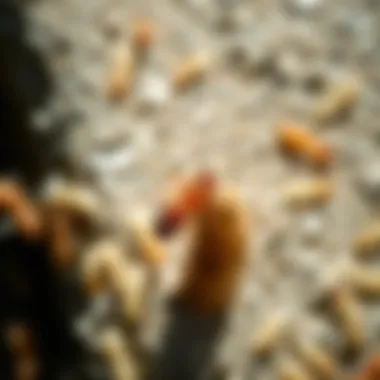
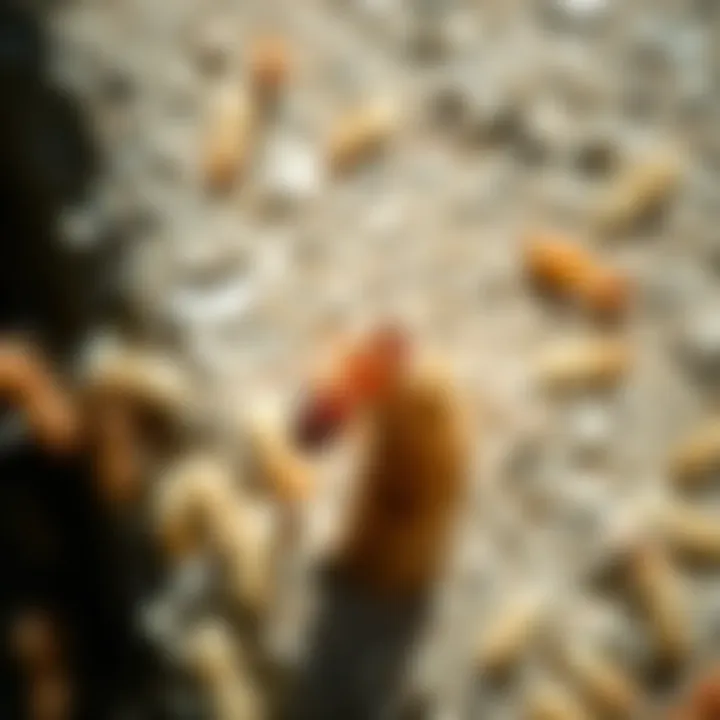
"Proper application is where the rubber meets the road; without attention to detail, the best product can underperform."
Efficacy of Termidor SC
The efficacy of Termidor SC is pivotal in understanding its place within the realm of pest control, particularly in the combat against termites. Homeowners often find themselves in a precarious situation, confronting infestations that threaten their property’s integrity. This section explores the core aspects of how effective Termidor SC is as a tool against termites, the benefits it offers, and crucial considerations that may impact its performance.
Field Studies and Trials
Numerous field studies and trials have been conducted to assess the effectiveness of Termidor SC in various conditions. One key example is a study published by the University of Florida, which analyzed the impact of Termidor on subterranean termites. The findings were compelling: in controlled environments, structures treated with Termidor demonstrated a significant reduction in termite activity, often achieving complete control within months.
In another instance, a Midwest pest control company documented a trial where homes treated with Termidor were compared against those using alternative treatments. The results were striking—with over 90% of properties exhibiting no signs of termite presence after just one year of application. Notably, this was attributed not only to the chemical efficacy but also to the methodology of application.
Additionally, studies have shown that the non-repellent nature of Termidor SC contributes to its effectiveness. This means that termites cannot detect it, forcing them to unknowingly ingest the product and, subsequently, transfer it to other termites in the colony. This unique aspect solidified Termidor's reputation as a leading choice among pest control professionals, bolstering confidence among homeowners concerned about long-term pest management.
Long-Term Effectiveness
When it comes to long-term effectiveness, Termidor SC stands out. The product is engineered to provide a protective barrier that lasts well beyond the initial application. Research indicates that when applied correctly, Termidor can continue delivering protection for several years.
A study jointly conducted by various agricultural extension services reported minimal termite activity in properties treated with Termidor three to five years post-application. This resilience is critical for homeowners who wish to invest in solutions that do not require frequent reapplication.
One significant aspect of long-term effectiveness lies in its formulation. The active ingredients in Termidor SC are designed to bind to soil particles, offering increased retention and diminishing the likelihood of degradation. This property ensures that the termiticide remains active within the soil, thwarting termite efforts to breach the home's defenses.
"Long-lasting protection through sturdy formulation points Termidor SC as a solid candidate in termite management strategies."
For homeowners, asserting the longevity of any termite treatment is crucial. The prospect of a product offering sustained effectiveness alleviates many fears associated with frequent DIY treatments or the costs tied to repeated contractor visits. Simply put, the results from ongoing field studies bolster the assertion that Termidor SC is not just a quick fix but a long-term staple in the fight against termites.
Environmental Considerations
The significance of environmental factors in pest control cannot be overstated, especially when discussing chemical applications like Termidor SC Spray. As communities grow increasingly aware of the importance of biodiversity and ecosystem health, understanding how effective pest control measures can coexist with environmental protection becomes crucial. This section aims to enlighten homeowners about how Termidor SC interacts with the environment, highlighting its potential impacts on non-target species and assessing the safety of soil and water resources in its application vicinity.
Impact on Non-Target Species
When using any chemical treatment, one of the primary concerns is often the impact it may have on non-target species. These are the organisms that the pesticide isn't intended to affect but could end up being harmed nonetheless.
Termidor SC is designed with a mechanism that focuses its action specifically on termites, thereby minimizing its harmful effects on other insects and wildlife. This characteristic is largely due to its non-repellency, which means that target pests do not notice its presence, reducing the chances of incidental exposure to non-target organisms. Having said that, it’s still important for homeowners to take precautions.
- Monitoring Local Wildlife: Homeowners should observe the ecosystems around their property and be aware of species that could be affected. For example, certain beneficial insects, like bees and butterflies, can be sensitive to chemical treatments.
- Proper Application: Using Termidor in accordance with the manufacturers' guidelines ensures that it minimizes off-target drift. Applying it during windless conditions and at the recommended concentrations can make a big difference.
"Chemical treatments should not only be about killing pests; they should also focus on protecting the balance of our ecosystems."
While Termidor SC has been tested for its effects on a variety of organisms, an awareness of local biodiversity enables homeowners to make smarter decisions regarding its application.
Soil and Water Safety
The safety of soil and water in areas where Termidor SC is applied is a paramount concern for many homeowners. Contamination of these natural resources can lead to long-lasting environmental issues. Here, we break down how to assess and ensure the safety of these resources when using Termidor SC.
First off, it's important to note that Termidor SC is formulated to have low solubility in water, which means that it is less likely to leach into groundwater. However, environmental practices should still be prioritized:
- Soil Testing: Before applying any chemical treatment, consider testing the soil in your yard. This gives you a baseline understanding of existing chemical levels and soil health.
- Buffer Zones: Ensure that you maintain buffer zones around water sources such as ponds or wells. This precaution minimizes the risk of runoff affecting the quality of water.
- Regulatory Compliance: Always adhere to EPA guidelines and recommendations pertaining to the application of pesticides, which often include acceptable distances from water sources.
By being proactive and observant, homeowners can not only safeguard their immediate environment but also contribute to a healthier suburban ecosystem. If you're looking for more information about maintaining soil and water safety during pesticide use, consider looking at resources such as EPA.gov and CDC.gov, which often have guidance tailored to local communities.
Understanding these environmental considerations when using Termidor SC is essential for responsible pest management. Homeowners should feel empowered to control pests while also taking care of the world we live in.
Safety Precautions
Safety precautions are paramount to ensure that the use of Termidor SC Spray yields effective results while protecting both the applicator and the environment. This section dives into the necessary safety measures that homeowners and pest management professionals should follow when dealing with this potent termiticide. Understanding these precautions helps to mitigate risks and enhances the efficacy of termite control efforts, making them safer for everyone involved.
Personal Protective Equipment
When applying Termidor SC Spray, wearing appropriate personal protective equipment (PPE) is crucial. This protects the skin, eyes, and respiratory system from potential exposure. Some essential PPE includes:
- Long-sleeved shirts and long pants: It provides a barrier against splashes and contact with the chemical.
- Gloves: Neoprene or rubber gloves prevent skin contact with the pesticide. Avoid using lightweight cotton gloves, as they can absorb the chemicals.
- Goggles or face shield: Protects your eyes from accidental splashes, which can cause irritation or damage.
- Respiratory protection: A mask fitted with organic vapor cartridges is beneficial, especially in poorly ventilated areas, to avoid inhaling harmful substances.
Always remember to check the manufacturer's recommendations for specific PPE when using Termidor SC Spray. It can save your skin—literally!
Storage and Disposal Guidelines
Proper storage and disposal of Termidor SC Spray are essential components of using this product responsibly. Here are critical guidelines to adhere to:
- Storage:
- Disposal:
- Keep Termidor SC Spray in its original container, tightly sealed, and stored in a cool, dry place away from heat sources or open flames.
- Ensure that the storage area is inaccessible to children and pets.
- Avoid exposure to direct sunlight, as extreme temperatures can compromise the integrity of the chemical.
- Never dispose of unused Termidor SC Spray by pouring it down the drain. This could contaminate water sources and harm aquatic life.
- Follow local regulations for hazardous waste disposal. Many regions have specific facilities for disposing of pesticides, ensuring they don't end up in landfills.
- When the container is empty, triple rinse it with water before disposal, ensuring all residues are removed. The rinsate can sometimes be used during application, following appropriate guidelines.
Adhering to these storage and disposal protocols not only contributes to effective pest management but also supports a commitment to environmental sustainability.
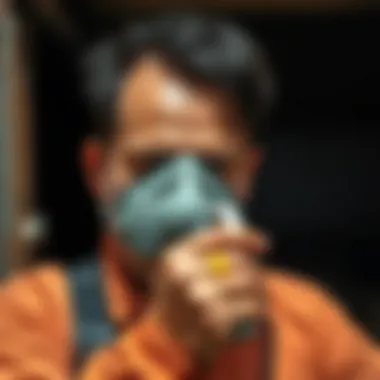
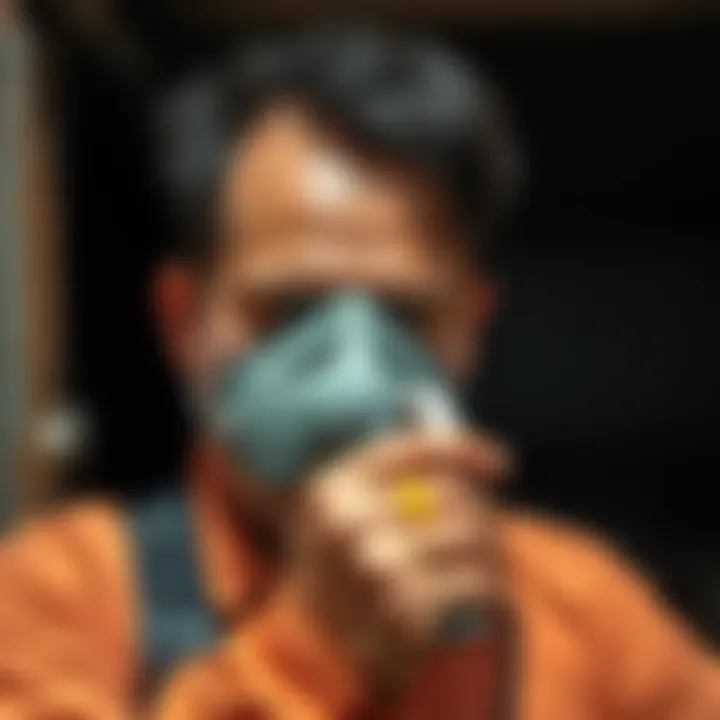
Comparison with Other Termiticides
When it comes to preserving your home from the menace of termites, the termiticide you choose plays a pivotal role in ensuring long-term pest management success. In this section, we take a closer look at how Termidor SC Spray stacks up against other options in the market. Understanding the distinctions can help homeowners make informed decisions about which solution best fits their needs.
Chemical Alternatives
Several chemical alternatives to Termidor SC exist in the market. Options such as Chlorpyrifos, Fipronil, and Imidacloprid offer different modes of action and levels of efficacy against termites.
- Chlorpyrifos: This has been a longstanding choice in pest control, acting as a neurotoxin to insects but has faced scrutiny over environmental hazards and restrictions in some areas.
- Fipronil: Known for its effectiveness, it disrupts the insect's nervous system. However, its lingering presence can be a concern for soil impact.
- Imidacloprid: Belongs to the neonicotinoid family and offers a fast-acting solution. Yet, there are discussions about its potential impact on non-target species, especially pollinators.
While these chemicals provide varying efficacy against termites, they often come with trade-offs concerning environmental safety and non-target risks. On the other hand, Termidor SC has an edge thanks to its dual-action properties, controlling termite populations while being less harmful to beneficial insects.
Natural Solutions and Their Efficacy
Natural alternatives are gaining traction among environmentally conscious homeowners. These may include solutions like boric acid, nematodes, and orange oil. Each can target termites effectively but often require consistent application and monitoring to ensure success.
- Boric Acid: It works by damaging the termite's digestive system and is lighter on the environment. Still, it may take longer to see results compared to chemical options like Termidor SC.
- Nematodes: These microscopic worms infect and control termite populations and pose no threat to your garden’s ecosystem, but they can be sensitive to environmental changes.
- Orange Oil: By disrupting the cellular structure of termites, this becomes an instant kill solution. However, it may be less effective for large infestations, needing repeated applications.
Incorporating natural solutions might reflect a homeowner’s values, but it's essential to combine them with preventive measures for the best results.
Each option comes with its own strengths and limitations. Where Termidor SC has been established as a reliable choice, weighing the benefits of chemical vs. natural solutions becomes essential for homeowners looking to proactively address termite threats.
Best Practices for Homeowners
Understanding how to effectively use Termidor SC Spray requires more than just following instructions on the label. Homeowners should embrace a holistic approach, ensuring they employ best practices that not only enhance the efficacy of the product but also maintain a safe and healthy environment. Here, we delve into essential strategies that can equip homeowners with the knowledge and tools to safeguard their properties against termite infestations effectively.
Integrated Pest Management Strategies
Integrated Pest Management (IPM) is a sustainable approach to pest control that combines various management techniques into a unified strategy. It aims to minimize the use of chemicals while maximizing effectiveness against pests. For Termidor SC users, adopting IPM can significantly improve your defense against termites.
Key components of IPM for termite management include:
- Inspection: Regular inspections are crucial. Look for signs of termite activity such as mud tubes or damaged wood. Detecting an issue early can save you a lot of time, money, and headaches.
- Cultural Practices: Maintain a barrier between your home and termites by managing moisture levels around your property. Fix leaks, ensure proper drainage, and store wood away from soil.
- Biological Control: Consider introducing natural predators to your environment. Certain nematodes, for instance, can help keep termite populations in check.
- Chemical Control: Use Termidor SC Spray as directed, but only after implementing the above strategies. This way, the chemical acts as a final line of defense rather than your sole method of control.
"Prevention is better than cure." A proactive approach through IPM can protect your home from infestation well before it becomes a significant problem.
Recognizing Infestation Signs Early
To effectively manage termites, you must be vigilant and recognize the signs of an infestation before it spirals out of control. Early detection is key to mitigating potential damage.
Common signs that homeowners should be on the lookout for include:
- Mud Tubes: These pencil-sized tunnels are constructed by termites to travel between the soil and their food source. If you see these in your basement or along your foundation, take action.
- Wood Damage: Pay close attention to wood surfaces that appear hollow or show tiny holes. These might be signs that termites are munching away, often leaving exterior surfaces intact.
- Frass: This term refers to termite droppings, often resembling small pellets. Finding frass around wooden areas can indicate a nearby termite nest.
- Swarmers: During spring, termites often swarm to mate. If you notice these winged insects inside your home, it’s time to take immediate action.
Recognizing these signs early not only helps in addressing the issue promptly but also informs how and when to apply Termidor SC Spray effectively. If homeowners can spot the signs, they can act faster, potentially avoiding extensive damage.
Frequently Asked Questions
Frequently Asked Questions (FAQs) play a crucial role in demystifying the complexities surrounding Termidor SC Spray. The nature of pest control products often prompts homeowners to seek clarity on their usage, effectiveness, and safety. By addressing the most common inquiries, this section aims to empower readers with knowledge, ensuring they make informed decisions when it comes to managing termites in their homes.
This article's inclusion of FAQs provides a dual function: it dispels misinformation while offering practical advice. With termites being a persistent threat to property, understanding the correct application of Termidor SC is essential.
Common Concerns About Usage
When it comes to using Termidor SC, one of the most pressing concerns for homeowners revolves around its safety in a residential setting. Many wonder if it poses risks to themselves, their pets, or the environment.
- Application Safety: Applying Termidor SC requires strict adherence to safety protocols. Wearing personal protective equipment is non-negotiable. This includes gloves and masks to prevent accidental exposure.
- Residue and Exposure: Homeowners often worry about chemical residues remaining after application. The good news is that Termidor SC is designed to remain effective for an extended period while minimizing surface residue.
- Toxicity Concerns: Questions about toxicity levels compared to other pesticides arise frequently. While no pesticide is without risk, Termidor SC carries a favorable safety profile when used as instructed. It’s crucial to remember that misuse can lead to issues not associated with the product itself but rather poor handling.
"Understanding how to use Termidor SC correctly is the key to ensuring both efficacy and safety for your household."
Addressing Misconceptions
Misconceptions about Termidor SC and its application can lead to unnecessary fear or improper use. Clarifying these misunderstandings is vital for effective pest control.
- Myth of Immediate Effectiveness: Some users believe that Termidor SC will work instantly once sprayed. In reality, its efficacy builds over time, as it targets termite colonies and disrupts their behaviors. Patience is essential when employing this termiticide.
- Environmental Harm: Another common misconception is that applying Termidor SC can lead to environmental degradation. While concerns about the impact of chemicals are valid, proper application minimizes risks to beneficial insects and the surrounding ecosystem.
- One-Time Application: A prevalent belief is that a single application is enough for long-term termite protection. In reality, ongoing monitoring and maintenance are essential components of an effective pest control strategy. Regular assessments can help catch infestations before they escalate.
By addressing these concerns and misconceptions, homeowners can navigate the realm of termite management with clarity and confidence. Equipped with the right information, they can leverage the benefits of Termidor SC while ensuring the safety of their living environments.
Closure
In this article, we’ve sifted through the intricate details surrounding Termidor SC Spray, highlighting its significance in termite management. Understanding its chemical makeup, methods of application, and safety protocols is crucial for homeowners. There’s no doubt that termite infestations can wreak havoc on one’s property. The ability to effectively use a product like Termidor can mean the difference between averting extensive damage and grappling with costly repairs.
Ultimately, it’s not just about spraying some solution on the ground and hoping for the best. It requires knowledge, patience, and the right techniques to ensure the longevity of protection that Termidor SC promises. Attention to the guidelines presented is paramount. It provides a peace of mind to homeowners, knowing they can safeguard their homes and valuables against potential threats from termites coveting the wood and structure beneath their feet.
Highlights from this article include a thorough exploration of its active and inert ingredients, as well as its efficacy through scientific studies. More than just a treatment, it’s a commitment--a proactive step toward home maintenance and pest management. The information contained within these sections encourages a sense of empowerment in tackling termite concerns head-on.
Summary of Key Points
- Chemical Composition: The blend of active and inert ingredients in Termidor SC reinforces its effectiveness against termites.
- Application Techniques: Proper setup and methodical approach during application are essential for the efficacy of treatment.
- Efficacy and Trials: Numerous studies back the long-term success and reliability of this termiticide in real-world scenarios.
- Environmental Impact: Consideration of safety regarding non-target species and the surroundings remains a priority.
The Future of Termite Management
As we look forward, the role of technology and innovation in pest management is gaining traction. Continuous research is waxing stronger, possibly leading to an enhanced understanding of termite behaviors. Emerging formulations promising less environmental impact and heightened effectiveness are in development. Homeowners should remain vigilant about new products coming to market while ensuring they are well-informed about their choices. Collaborative efforts among researchers, pest control professionals, and consumers pave the way for improved termites control strategies. The future rests on adapting to new challenges while harnessing knowledge and effective practices in ongoing pest management.



